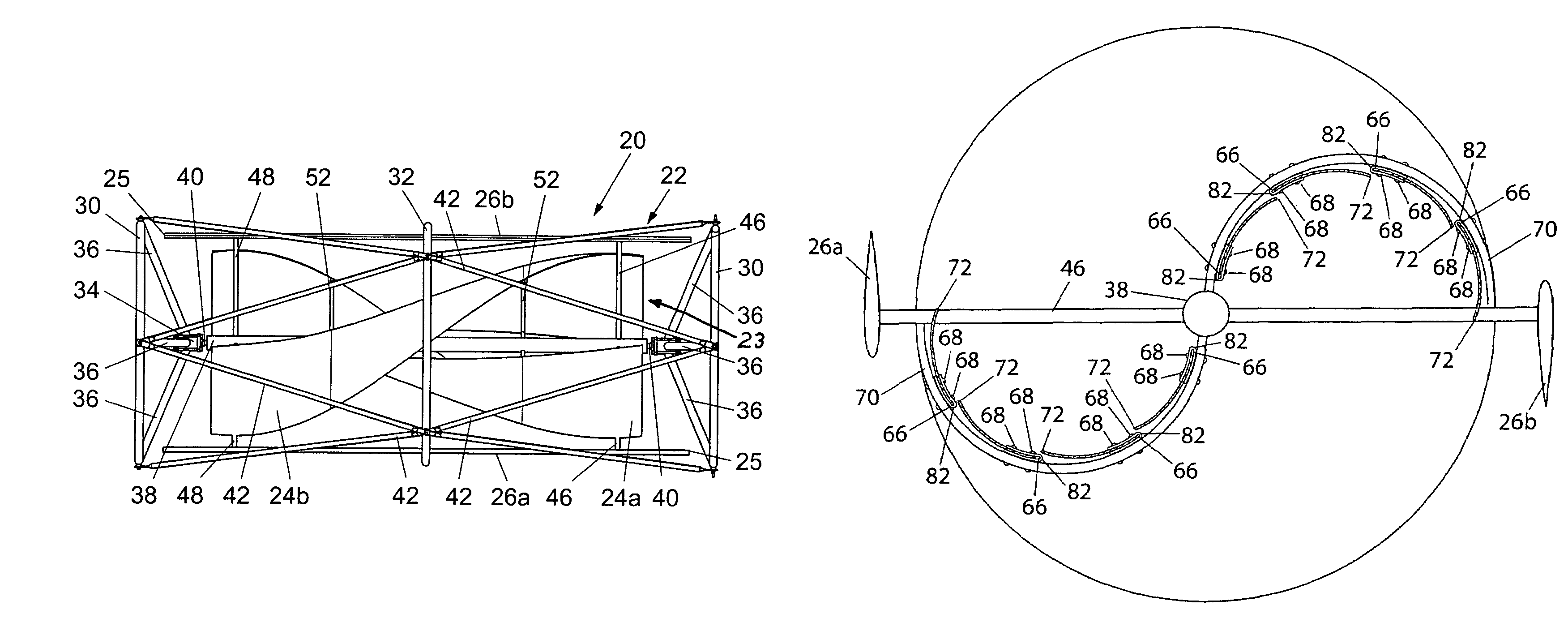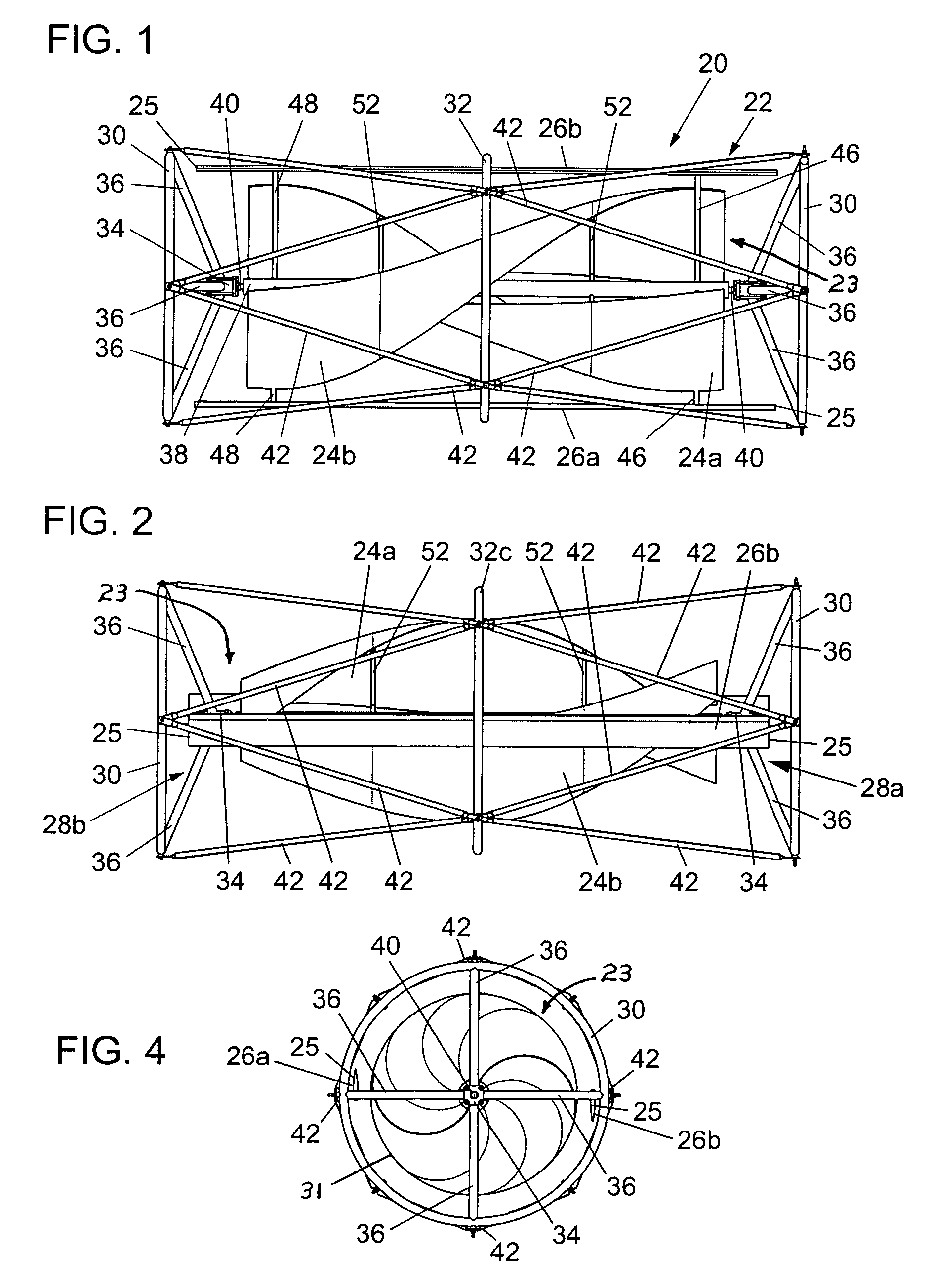Wind turbine device
a wind turbine and blade technology, applied in the direction of electric generator control, renewable energy generation, greenhouse gas reduction, etc., can solve the problems of excessive vibration during operation, limit the noise during operation, and the tendency to “run away”
- Summary
- Abstract
- Description
- Claims
- Application Information
AI Technical Summary
Benefits of technology
Problems solved by technology
Method used
Image
Examples
Embodiment Construction
[0033]Having reference to the drawings, wherein like reference numerals indicate corresponding elements, there is shown in FIGS. 1 through 5 an illustration of a hybrid wind turbine device forming one embodiment of the present invention, namely a non-segmented blade version, as generally denoted by reference numeral 20. Hybrid turbine 20 includes an outer protective safety frame or cage generally denoted by reference number 22, and a combination turbine blade assembly 23 comprising a pair of non-segmented (generally smooth-walled) helically twisted inner turbine blades, namely helical half wing blades 24a, 24b, and a pair of diametrically opposed outer airfoil blades 26a, 26b. Each of the helically twisted inner turbine blades and the outer airfoil blades cooperates in wind conditions to drive the operation of the other type blade. Further, each of the helically twisted inner turbine blades and the outer airfoil blades cooperates to form an inherent structural geometry which guards ...
PUM
 Login to View More
Login to View More Abstract
Description
Claims
Application Information
 Login to View More
Login to View More - R&D
- Intellectual Property
- Life Sciences
- Materials
- Tech Scout
- Unparalleled Data Quality
- Higher Quality Content
- 60% Fewer Hallucinations
Browse by: Latest US Patents, China's latest patents, Technical Efficacy Thesaurus, Application Domain, Technology Topic, Popular Technical Reports.
© 2025 PatSnap. All rights reserved.Legal|Privacy policy|Modern Slavery Act Transparency Statement|Sitemap|About US| Contact US: help@patsnap.com



